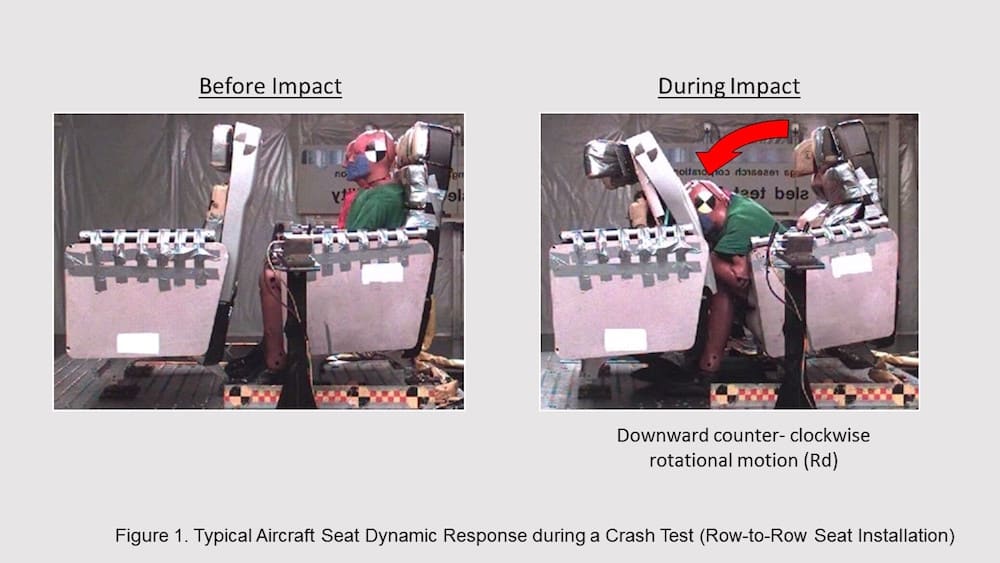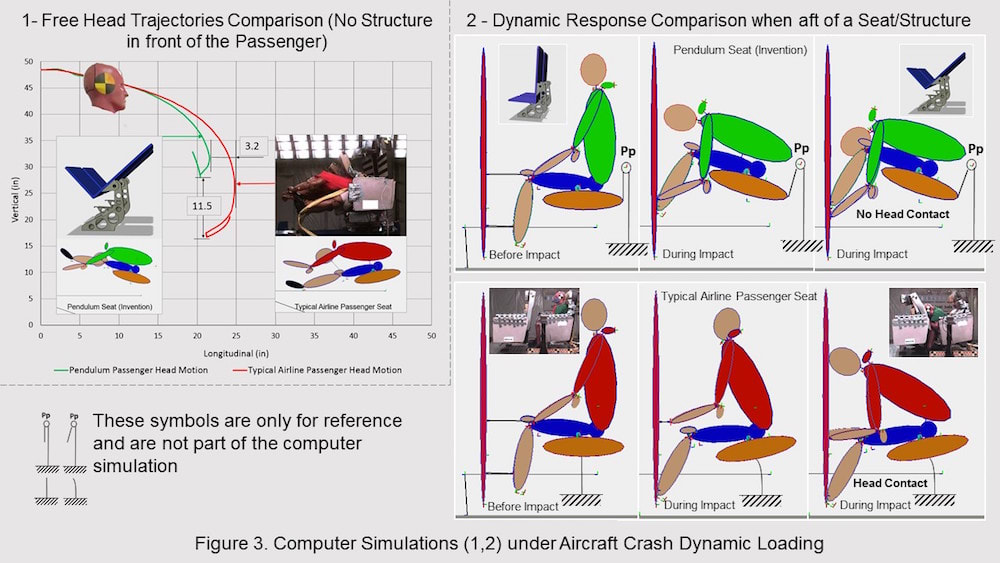Invention
The present invention relates to a vehicle seat that acts with a pendulum motion to reduce the likelihood of a passenger impacting the seat/structure in front of her during crash loadings.
Summary
In various modes of transportation, many passenger seats are at least partially surrounded by walls or monuments or may be placed behind other passenger seats. During a minor crash landing, a passenger may be thrown forward so that the passenger's head and/or body strikes these structures due to inertial loads. Regulators specify crashworthiness performance criteria to prevent head injury (HI) to the passenger in a seat. The average aircraft passenger seats, in row-to-row installations, are known in the field to have safety weakness for HI. HI can, at best, reduce a passenger’s ability to evacuate in a crash event, and, at worst, threaten the passenger’s life. Currently, exist various design approaches to reduce HI such us break-over backrests or airbags. However, these solutions do not prevent passenger head impact, but just soften it and are complex and costly. Thus, there is a need for a solution to avoid the head impact and reduce the cost when seated in row-to-row seating.
The common dynamic response of an occupied airline seat when exposed to a crash is a combination of downward counter-clockwise rotational movement (Rd) towards to the next row (Figure 1). Thus, although the passenger is restrained she is launched towards the seat in front and her head ends up typically colliding with it.
To solve this problem, Figure 2 illustrates an example of the present invention which allows the seat to act as a pendulum during crash loadings having a seat base connected to a seat pan (SP) through a pendulum pivot point (PP). The seat back is connected to the SP and the PP must be located above the SP, set back from the passenger and high enough along the seat back to generate an upward clockwise rotational motion (Ru) to pivot the SP toward the seat back. The SP pivots unassisted and naturally safeguards the passenger by pulling them away from the next row. Figure 3 illustrates two examples of computer simulations with different pivot points: Pendulum vs. Typical. Comparing the results of the two models with identical initial conditions indicated that the pendulum response shortens the head trajectory 11.50” vertically and 3.20” longitudinally and has no head contact whereas the regular seat does.
Last important thing to note is that the idea could lead in cheaper seats. Possible reasons might be: No special tooling requirements so current manufacturers can produce it, less need of expensive components to prevent HI and ease of certification.
Conclusion
Findings indicate that the shortening of the head trajectory is significant enough to either reduce head injury or avoid head strike in vehicle/aircraft row-to-row seats. It is understood that various modifications may be made therein and the invention of a seat that acts with a pendulum motion may be implemented in different vehicle applications for safer, simpler and cheaper designs.
Video
Like this entry?
-
About the Entrant
- Name:Oriol Oliva
- Type of entry:teamTeam members:Oriol Oliva-Perez Hector Marini Jad Azzi
- Software used for this entry:Ar-cad (freeCAD), Autodesk 123D Design
- Patent status:pending








